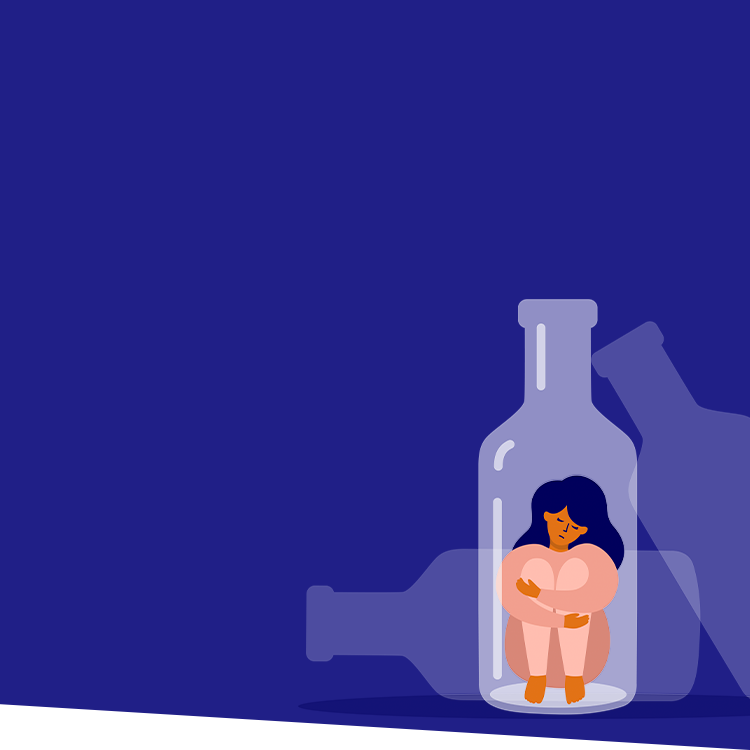Schools play a critical role in children's lives, and as children grow to pre-teens and teens, teachers and administrators worry about new risks they will experience. One such risk is the use of substances, such as alcohol, marijuana, tobacco, and other drugs.
Substance use by teens can have a big impact on their health and well-being. According to the American Addiction Centers, the statistics show that:
- by 12th grade, about two-thirds of students have tried alcohol;
- about half of 9–12th grade students report having used marijuana;
- about four in 10 of 9–12th graders report having tried vaping; and
- among 12th graders, almost two in 10 students report using prescription medicine without a prescription.
Approaching this issue requires an understanding of how drug use affects the well-being and development of students, and equipping them with tools to support their health and well-being.
Substances and Impact on Health
During adolescence—a time marked by significant biological and psychological changes—the teenage brain is developing ways to work more effectively. The brain accomplishes this, in part, by eliminating unnecessary synapses and connections between several parts of the brain to allow for increased focus and efficiency.
The teenage brain’s healthy development is critical to long-term cognitive functioning as an adult. Establishing and maintaining healthy behavior during adolescent years is paramount. Substance use impairs the brain’s ability to function in the short term and over time prevents proper growth and development by interfering with neurotransmitters and damaging connections within the brain.
When development is compromised, the ability to experience pleasure naturally is reduced—inhibiting the development of perceptual abilities and creating problems with memory. Additionally, compromised development establishes unhealthy habits in brain circuitry.
In addition to these adverse effects, there are significant physical risks. Delayed puberty and negative effects on the reproductive system, reduced growth potential, lower bone mineral density, and higher levels of enzymes that can lead to liver damage are some examples.
Even in the absence of long-term physical damage, there are accompanying consequences that can trouble teens into adulthood—criminal records, assaults, car accidents, sexually transmitted diseases, unplanned pregnancies, wasted academic opportunities, delayed or deferred career opportunities, and damaged relationships with friends and family. Finally, substance abuse can lead to an increased risk of mental health disorders, including anxiety, depression, and psychosis.
School personnel must understand the root cause of teenage substance use so they can increase awareness and work toward prevention.
Reasons for Substance Abuse
Teens often use drugs to generate good feelings and avoid or escape bad ones. In today’s world, not only are these substances readily available, but adolescents also see substance use on social media and in their homes. They are aware that drugs exist and they know how they can obtain them.
What specifically drives teens to substance abuse, and how can you address each cause?
- Curiosity. Being curious about new experiences is developmentally appropriate. When opportunity arises, and the ease of availability of substances makes opportunity prevalent, teens may direct that curiosity toward experimenting with those substances. Their belief that experimentation is normal and not harmful, allows them to rationalize their curiosity. Sadly, scaring teens tends not to work. Instead, counteract their curiosity to healthy, engaging, and meaningful interests or experiences.
- Escape. The effects of substances appear quickly and can make a person feel good in the short term, enabling them to escape negative feelings. Sometimes students use substances to enhance their experiences at events, such as music festivals or parties. They feel good doing them, but it’s at the expense of their healthy development. It’s important to acknowledge this with them; let them know you understand the pleasurable effects of some substances. But ensure you do so in the context of a conversation in which you also can teach them about the long-term effects of substance use.
- Social anxiety. Students frequently use substances to help them manage the anxiety they feel in social situations. Community—co-curricular activities like clubs or athletics—create structured social activities and opportunities for kids to connect. Direct anxious students to a school counselor who can offer them strategies and skills to cope with social anxiety. These might include journaling, talking with friends, playing with a pet, or getting outside.
- Self-medication. Students often turn to substances to manage a wide variety of stressors, including sleep issues, general anxiety, and uncomfortable emotions such as sadness, guilt, anger, and shame. Pressures from academics, athletics, peers, or within the family system can lead to unbearable stress. Resources and support systems replace substance use as a coping mechanism. Teenagers need to understand what an emotion is and how to identify, label, and express what they’re feeling. Though it seems basic, teaching kids how to process emotional experiences can be a deterrent to the experimentation and use of substances that can lead to addiction.
- Rebellion. Rebellion is part of growing up, as is testing boundaries and taking risks. Alternative activities can help meet those needs in ways that do not cause mental or physical harm. One possibility might be to identify causes that are important to your students and then encourage them to explore activism and participate in social movements.
- Lack of honest education. Telling teenagers that drug use leads to addiction is an incomplete narrative because not all drug use leads to addiction. Students who use drugs in ways that don’t cause addictive behavior are aware of this, and when there’s a gap between what they’re told and what they experience, they stop listening to adults. If you want them to trust you, you must give them facts. This is especially important to counter misinformation spread by friends and social media. Share the science of how drugs affect the development of their brain and the ways drugs impact their academic and athletic performance and their relationships with friends. This will empower them to make autonomous decisions based on balanced, accurate information.

Tune in to live webinars every week during the school year to get specific, research-backed insight you can immediately apply at your school.
Stages of Substance Abuse
Adolescents don’t use drugs once or twice and then end up addicted. They start with a level of experimentation. At this early stage, substance use is voluntary, and they may not be aware of legal or social consequences. Teens are feeding their curiosity about how drugs affect their experiences and emotions—it is often about having fun and fitting in.
As they begin to use substances more regularly, teens become increasingly dependent on substances when participating in social events or activities, or perhaps as members of certain social groups. There is an increase in the incidence of risky behavior, often coinciding with unmanaged depression and anxiety. Warning signs begin to appear. At this stage, students might experience mood changes or lose interest in their academic and athletic performance and friend groups.
Soon, they become preoccupied with how they're going to access substances. During this stage, children experience cravings and increased symptoms of depression and irritability. They might avoid eye contact, ignore or break school rules, ask for money or steal, make secretive phone calls, or isolate themselves from others. Psychological warning signs of substance abuse include unexplained changes in personality or attitude, sudden mood swings or angry outbursts, and the appearance of fear, anxiety, or paranoia without apparent external cause.
Once a child becomes addicted to substances, they experience a physical dependence. They use compulsively and will suffer withdrawal symptoms if they try to abstain. Severe consequences begin to manifest, such as school suspension or expulsion, loss of friends, and legal troubles.
Addiction will impact all domains of a student’s life, but it happens gradually. This is why, from a prevention standpoint, discussion about the effects of substance use must start early and take place often.
What to Do If You Suspect Substance Abuse
Warning signs indicate there may be cause for concern, but there is no proof of a substance use problem. If you suspect a student is abusing substances, it is important to first speak with them to better understand the situation. The next step should include screening for substance use by a professional, such as a school counselor or psychologist. If there is no clear evidence of abuse, then encourage families to contact their primary health care physicians to rule out physical problems.
But if a formal intervention becomes necessary, contact local substance abuse professionals. With proper preventative measures and diligence to monitor student well-being, substance use can be mitigated and student health protected.
*Content courtesy of D&G Wellness.





